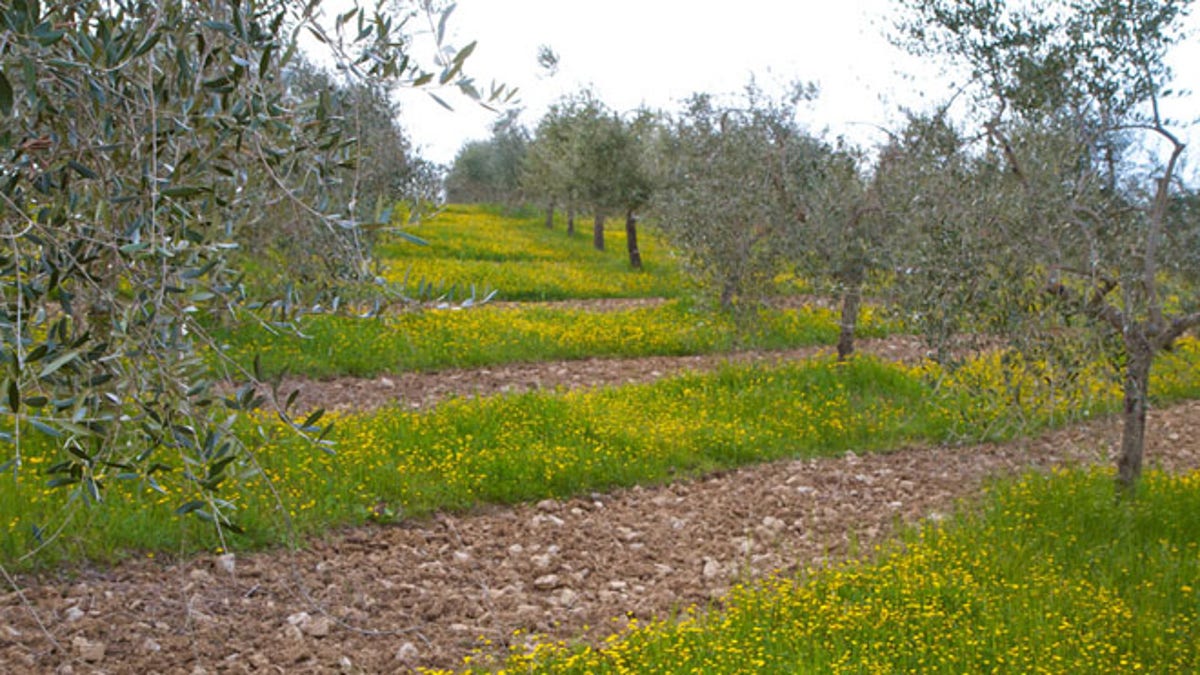
Azienda Agricola Pornanino has four different types of olive trees: Frantoio, Pendolino, Moraiolo and Leccino (Matteo Boggio Robutti)
America's appetite for olive oil is on fire.
Lauded for its taste and health benefits, U.S. demand for olive oil is up about 20 percent since a decade ago. In 2013, the U.S. imported about $1.1 billion worth of olive oil from around the world, with nearly half of that coming from Italy alone.
"What you think you might know about olive oil is most likely inaccurate."
So where better to learn about the oil than Tuscany.
Italian olive oil producer Matteo Boggio Robutti and his wife Francesca are co-owners of Azienda Agricola Pornanino, an olive oil farm in the Chianti region of Tuscany. In an area known more for their wine, Robutti’s operation includes 4,000 olive trees and welcomes the public to his property to learn more about olive oil.

Owner Matteo Boggio Robutti leads a weekly class on the process for making olive oil. (Fox News)
"What you think you might know about olive oil is most likely inaccurate," he told me on a recent trip to his farm.
Robutti says that only small family-run operations, like his, still make the product the "old-fashion way" by picking the olives by hand and grinding them in a traditional stone mill. His blend includes Frantoio, Pendolino, Moraiolo and Leccino types of olives.
He says selecting a good olive oil takes three senses: sight, taste and smell, but there's so much consumer confusion about what is a quality product. Robutti warned that manufacturers try to dupe consumers by adding dyes, enticing customers with deceptive packaging or using vague labelling.
Last week, two major producers of the cooking oil—Filippo Berio Olive Oil Brands and Safeway’s Select Brand of olive oil —were sued in separate class action lawsuits, filed by a California woman who charged them of false advertising.
Here's a simple checklist when deciding which product is the best.
Color is one factor to look for. “Light yellow and transparent olive oil indicates a very poor quality or a chemically refined one,” said Robutti. While olive oil is initially green when it’s pressed, over time it should turn dark yellow. He claims some companies use green dye in their final product to trick buyers into thinking theirs is more pure.

Matteo’s wife, Francesca offers visitors toasted slices of bread with their signature extra virgin olive oil. (Fox News)
The type of bottle olive oil is packaged in is also important. “Olive oil has to be kept into a dark bottle in order to preserve it from the action of the sunlight which strongly increases the oxidation quickly lowering the qualities of the olive oil,” said Robutti. “Clear bottles are usually used to attract the clients with the color of the olive oil.”
Also, don’t always trust the label Robutti says.“Unfortunately labels are not really informative on what is in the bottle.”
Key terms to look for on the label are “extra virgin olive oil", "first cold press", and "not filtered.”
“Extra virgin olive oil” and “first cold press” means the olive paste was extracted with no heat or chemical additives allowing for a more pure product, Robutti explains. Also, by the product being “not filtered” the maker has left small particles of olive flesh giving the oil added flavor.

Azienda Agricola Pornanino has 4,000 olive oil trees on their estate. (Matteo Boggio Robutti)
Robutti says the U.S. is the top market for his product. He sells nearly 90 percent of his olive oil directly to American consumers.
I left Robutti with a bottle of his extra virgin olive oil to bring home and the advice of what to "look, smell, and taste for," in my next bottle of olive oil.
